Almanac: Beetle Art
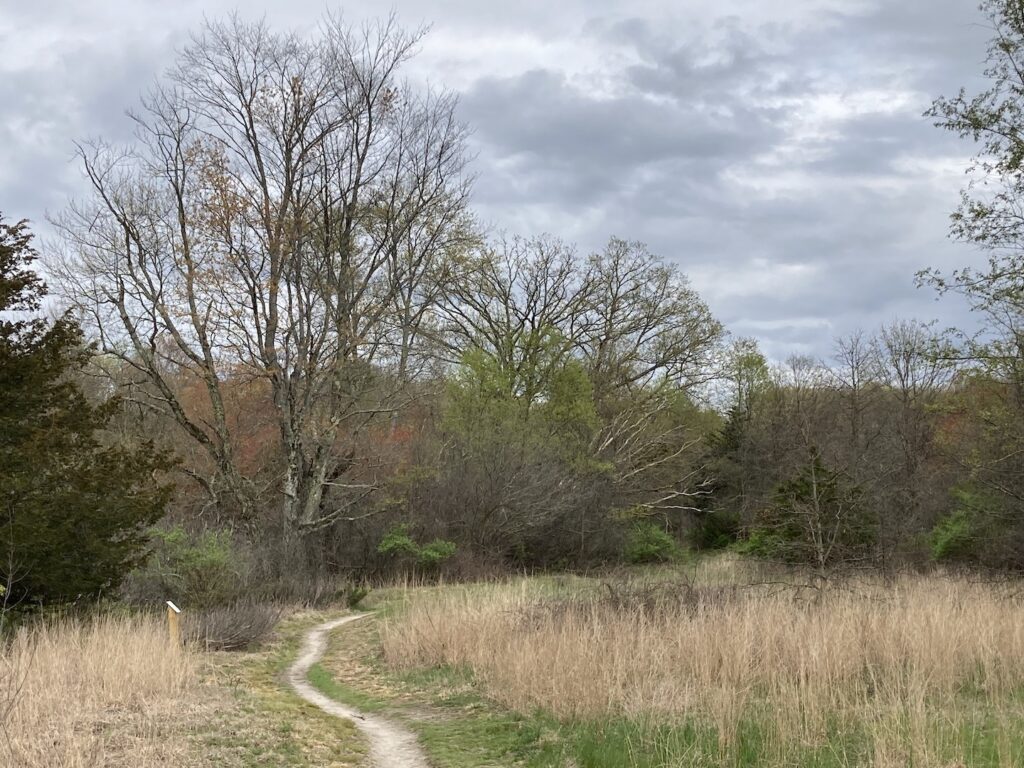
The Emily Dickinson Trail meanders for about a mile along the Fort River from Groff Park to Southeast Street in south Amherst. Photo: Stephen Braun
Between rain squalls last week I hiked the Emily Dickinson Trail along the Fort River. I was looking for young milkweed shoots. A friend of mine had some growing in her garden, and raved about the flavor of the young shoots, flower buds, and undeveloped seed pods. Intrigued, I cooked up a few 6-inch shoots, following the advice of Euell Gibbons in Stalking the Wild Asparagus. The milkweed stalks tasted a lot like asparagus, actually, but were more tender and less fibrous. With the evangelical zeal of the newly converted I’ve been telling everyone around me about this delicious edible, and I was keen to find some in the wild.
I’ve known about milkweed since I was a kid. I was fond of breaking open the big seed pods in the fall and setting the fluffy, down-like seeds loose in the breeze. And I knew that monarch butterfly larva feed on milkweed leaves and the milky sap therein. The sap is somewhat toxic and bitter-tasting, although not to Monarchs. The toxin is absorbed into the Monarch tissues, which makes them taste awful to many predators, thus providing some species-level protection. (The toxin is easily and quickly removed by boiling, so there’s no danger in eating cooked milkweed.) Anyway…I’ve often noticed milkweed growing along trails around here, so I figured it would be easy to find a nice patch of shoots to accompany my dinner that night.
I should have known. In the length of the mile-long trail I found only two old milkweed plants, with their empty, distinctive seed pods, and no sign of emerging shoots. I’ll continue the hunt in the days to come!
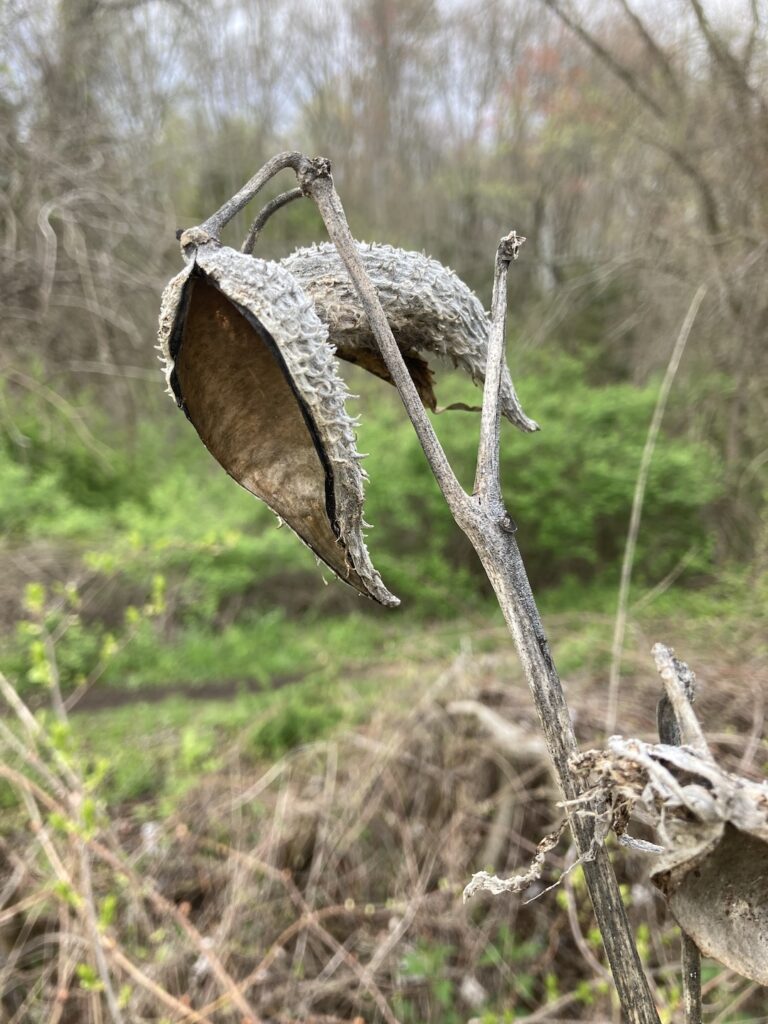
In the course of my walk, however, I came across several examples of something just as interesting–if not as potentially tasty–as the milkweed/Monarch symbiosis.
Bark beetles are a group of insects that reproduce within the bark of trees, particularly conifers. These beetles leave behind distinctive patterns, often referred to as “galleries,” as they tunnel through the inner (phloem) and outer (cambium) layers of the tree. Adult beetles excavate the galleries, where they lay their eggs. When the larvae hatch, they create their own feeding tunnels, which radiate out from the egg gallery. The larvae eventually pupate, transforming into adult beetles that emerge from the tree to disperse and infest other trees.
The combination of the adult egg galleries and the larval feeding tunnels create intricate and distinctive patterns in the wood. Here’s a little gallery of the galleries I saw on my walk:
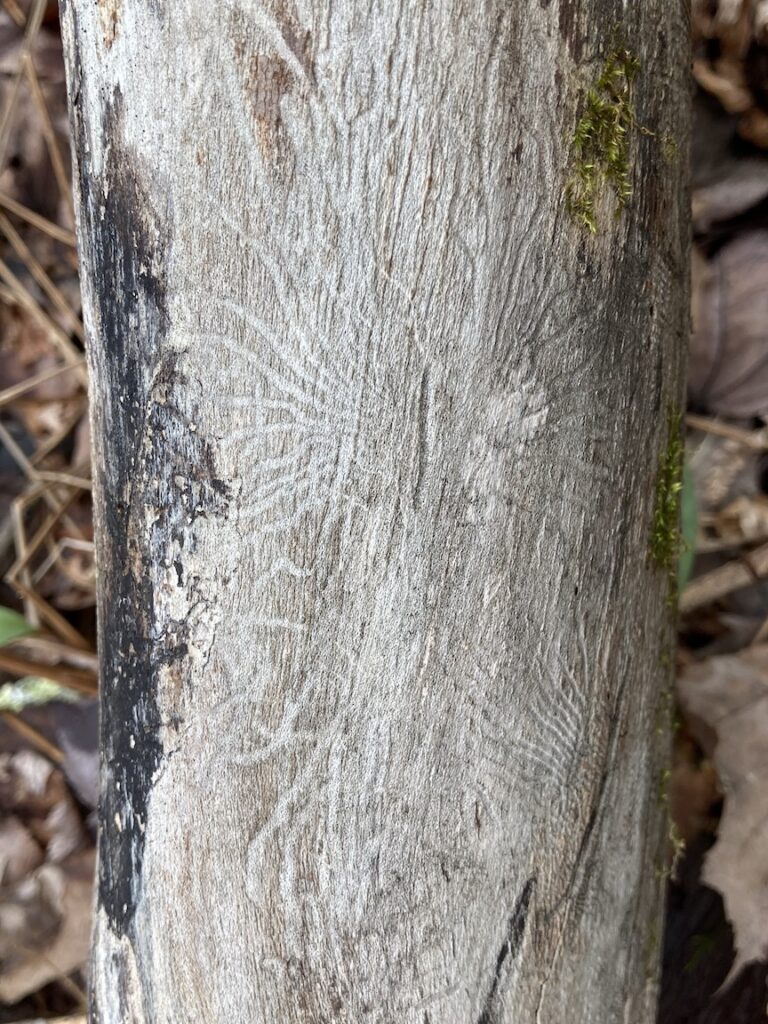
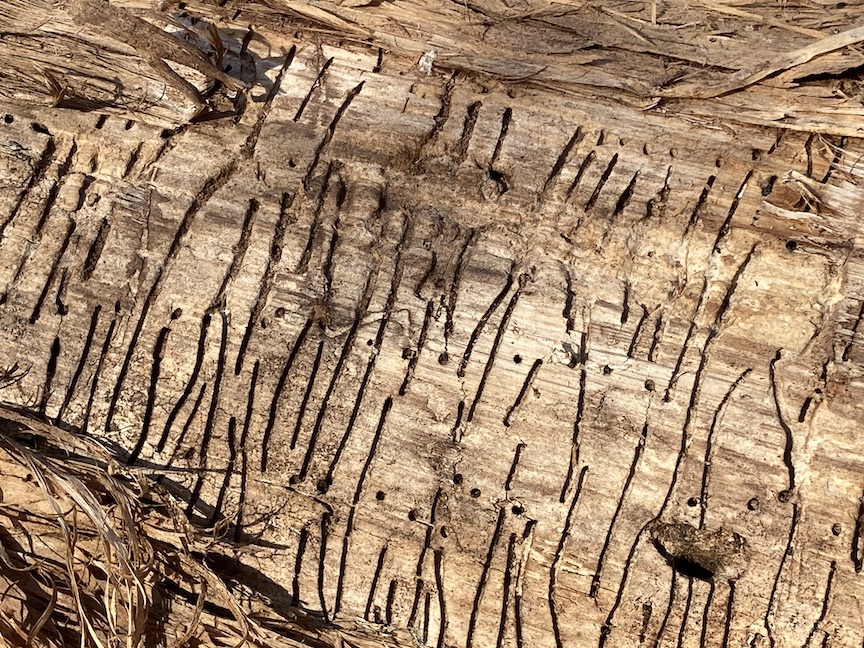
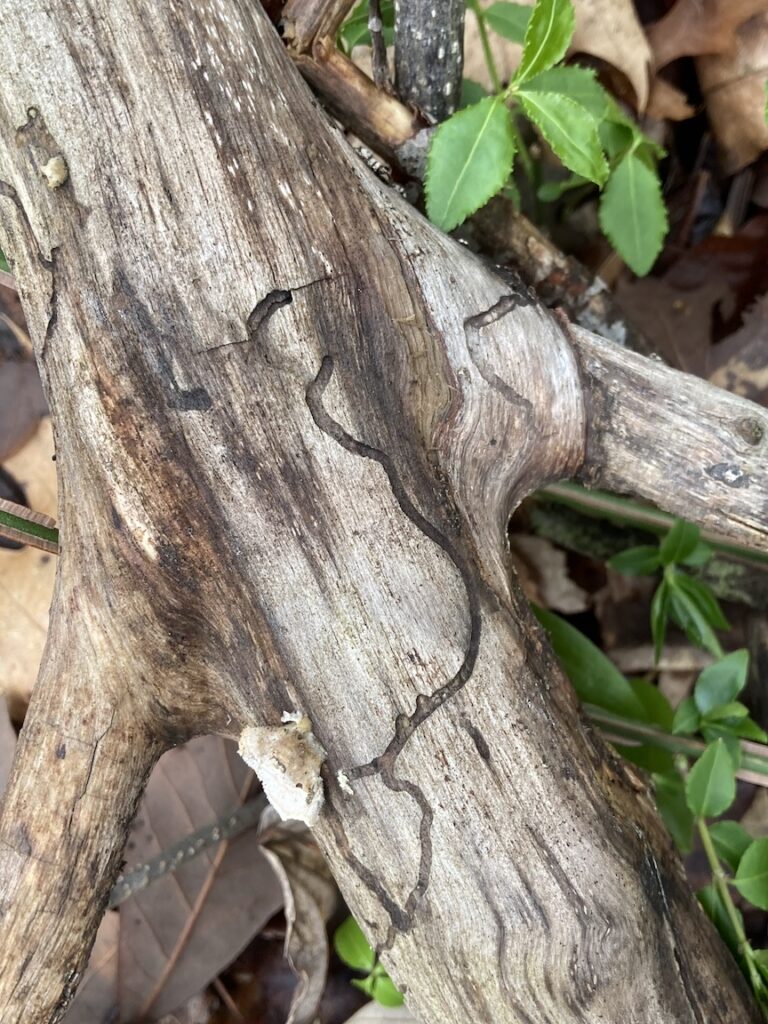
These kinds of “beetle art” are very common, but are usually hidden. It’s only when the bark is removed–usually soon after a tree has died–that you see the bark beetles’ signatures. Just as some people claim to divine a person’s personality traits by examining their handwriting, you can learn a lot about a bark beetle by the pattern of its etchings. These patterns can be used by entomologists and forest managers to identify the specific bark beetle species responsible for an infestation, which in turn helps determine the most effective control strategies.
Many trees have natural defenses against bark beetles, including the production of toxic chemicals called terpenes and the release of resin, which can trap and kill invading beetles. However, when a tree is weakened or stressed, its ability to produce these defenses can be diminished, making it more susceptible to beetle attacks. In large numbers, bark beetles can be devastating, but they are usually kept in check by woodpeckers and other bark-boring birds who feast on the protein-rich beetles and their larvae.
Almanac is a regular Indy column of observations, musings, and occasional harangues related to the woods, waters, mountains, and skies of the Pioneer Valley. Please feel free to comment on posts and add your own experiences or observations.
